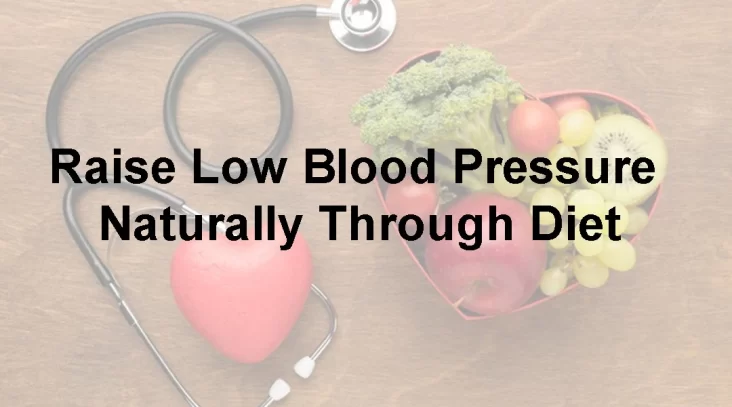Low blood pressure, or hypotension, can lead to symptoms such as dizziness, fainting, and fatigue. While addressing low blood pressure through diet may not be a substitute for medical advice and treatment, certain dietary strategies can help support overall cardiovascular health and potentially contribute to raising blood pressure.
Here’s a comprehensive guide to raise low blood pressure naturally through diet
Increase Salt Intake:
Contrary to recommendations for individuals with high blood pressure, those with low blood pressure may benefit from slightly increasing salt intake. Salt helps retain water and can raise blood pressure. However, this approach should be approached cautiously, and consultation with a healthcare professional is essential, especially for those with kidney issues or other health concerns.
Stay Hydrated:
Dehydration can exacerbate low blood pressure. Ensure you’re adequately hydrated by drinking enough water throughout the day. However, be mindful of excessive caffeine and alcohol intake, as they can contribute to dehydration.
Eat Small, Low-Carb Meals:
Large, carbohydrate-heavy meals can cause a temporary drop in blood pressure. Opt for smaller, more frequent meals, and include complex carbohydrates, lean proteins, and healthy fats in your diet to provide a steady source of energy without causing drastic blood pressure fluctuations.
Include More Fluids and Electrolytes:
Consuming fluids that contain electrolytes, such as sports drinks or coconut water, can help maintain proper fluid balance and support blood pressure. These drinks can be particularly beneficial after physical activity or in hot weather.
Increase Caffeine Intake:
Caffeine can lead to a short-term increase in blood pressure. Including moderate amounts of caffeine, such as in coffee or tea, may help raise blood pressure temporarily. However, individual responses to caffeine can vary, so it’s crucial to monitor how your body reacts.
Consider Herbal Teas:
Certain herbal teas, like liquorice tea, may have mild blood pressure-raising effects. Liquorice contains glycyrrhizin, which can lead to sodium retention. However, excessive consumption of liquorice can have adverse effects, so it’s essential to use it cautiously and consult with a healthcare professional.
Consume More Omega-3 Fatty Acids:
Omega-3 fatty acids, found in fatty fish (salmon, mackerel, sardines), flaxseeds, and walnuts, contribute to cardiovascular health. Including these foods in your diet may have positive effects on blood pressure regulation.
Eat Potassium-Rich Foods:
Potassium is crucial for balancing sodium levels and maintaining healthy blood pressure. Include potassium-rich foods like bananas, oranges, potatoes, spinach, and tomatoes in your diet. Potassium helps counteract the effects of sodium, promoting a healthy balance.
Maintain Adequate Magnesium Intake:
Magnesium plays a role in blood pressure regulation and muscle function. Foods rich in magnesium, such as nuts, seeds, whole grains, and leafy green vegetables, should be part of your diet.
Limit Refined Sugar and Processed Foods:
Diets high in refined sugars and processed foods can contribute to various health issues, including fluctuations in blood pressure. Focus on whole, unprocessed foods to provide essential nutrients without the negative impact of added sugars and unhealthy fats.
In conclusion, while dietary changes can play a role in supporting healthy blood pressure, it’s crucial to remember that individual responses vary. It’s essential to consult with a healthcare professional before making significant changes to your diet, especially if you have existing health conditions or are taking medication. A balanced, nutrient-rich diet, combined with a healthy lifestyle, can contribute to overall cardiovascular well-being and may help raise low blood pressure naturally through diet.


One Comment
Pingback: Raise Low Blood Pressure Naturally Through Diet – Sujata Birla Hospital